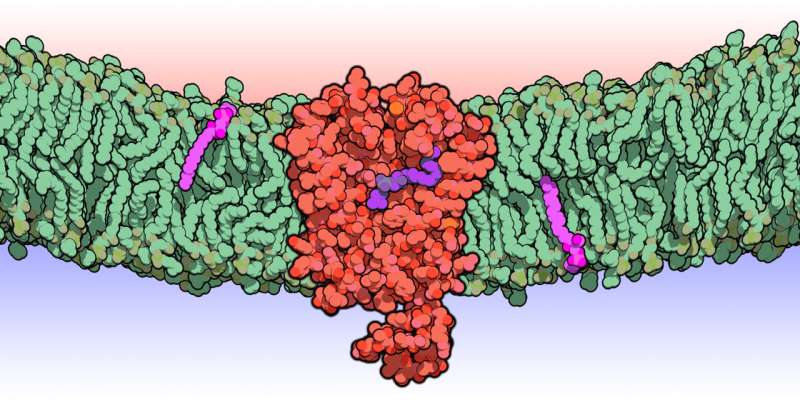New understanding of the inner world of lysosomes

Researchers at Duke-NUS Medical School and colleagues in Singapore have identified a protein that transports degraded membrane lipids out of lysosomes, cellular organelles that are the breakdown factories of cells. The findings, published in the Proceedings of the National Academy of Sciences, further the understanding of the role of the lysosome in health and disease.
"Found in cells throughout the human body, lysosomes are tiny organelles responsible for breaking down cellular waste products and salvaging reusable molecules as building blocks for cellular components," explained Ms. Menglan He, co-first-author of the study and MD-Ph.D. candidate with the Integrated Biology and Medicine Ph.D. track at Duke-NUS. "When lysosomes malfunction due to rare genetic disorders, this creates a build-up of toxic cellular waste products and affects other organelles, causing organ and cellular pathologies such as neurodegeneration."
In the study, Ms. He and a multidisciplinary team of scientists in Singapore screened a panel of transporter proteins whose functions have not been fully elucidated. The proteins that they screened belong to a group called the major facilitator superfamily (MFS), which are important for the transportation of molecules across cell membranes.
Their findings revealed that an MFS protein called Spns1 transports the broken-down products of two phospholipids, phosphatidylcholine and phosphatidylethanolamine—which are important building blocks for the structure and function of living cells—out of lysosomes and into the cytoplasm. The two molecules then go through pathways that recycle them into their original lipid forms so they can be reincorporated into the cell.
"Scientists know quite a lot about the molecular processes involved in breaking down and transporting some molecules out of lysosomes," added Dr. Alvin Kuk, who is also a co-first-author of the study and Postdoctoral Research Fellow with the Cardiovascular & Metabolic Disorders (CVMD) Program at Duke-NUS. "But when it comes to the two lipids, phosphatidylcholine and phosphatidylethanolamine that represent the most abundant phospholipids of cell membranes, very little is known."
The scientists further found that Spns1 deficiency in cells and preclinical models led to the pathological accumulation of breakdown products of the two lipids inside lysosomes. This accumulation led to various disease states, including signs of increased inflammation.
"Historically, it has been difficult to identify lysosomal lipid transporters, limiting our understanding of the role of the lysosome in lipid metabolism and disease," said Professor David Silver, the lead senior co-author of the study and Deputy Director of the CVMD Program at Duke-NUS. "This study provides a framework to investigate how this new transporter works and its role in health and disease."
"This has been a fantastic collaboration," said Assistant Professor Federico Torta, a senior co-author of the study from Yong Loo Lin School of Medicine at the National University of Singapore. "We helped to clarify the function of Spns1 by integrating the results of our colleagues at Duke-NUS with our lipidomic data. Mass spectrometry-based lipidomics of tissues, cells and isolated lysosomes allowed for the identification of quantitative and qualitative alterations in their lipid composition at high resolution and sensitivity."
More information: Menglan He et al, Spns1 is a lysophospholipid transporter mediating lysosomal phospholipid salvage, Proceedings of the National Academy of Sciences (2022).
Journal information: Proceedings of the National Academy of Sciences
Provided by Duke-NUS Medical School



















